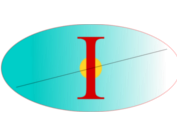Citation:

Abstract:
We review a suite of stochastic vector computational approaches for studying the electronic structure of extended condensed matter systems. These techniques help reduce algorithmic complexity, facilitate efficient parallelization, simplify computational tasks, accelerate calculations, and diminish memory requirements. While their scope is vast, we limit our study to ground-state and finite temperature density functional theory (DFT) and second-order perturbation theory. More advanced topics, such as quasiparticle (charge) and optical (neutral) excitations and higher-order processes, are covered elsewhere. We start by explaining how to use stochastic vectors in computations, characterizing the associated statistical errors. Next, we show how to estimate the electron density in DFT and discuss highly effective techniques to reduce statistical errors. Finally, we review the use of stochastic vector techniques for calculating correlation energies within the secondorder Møller-Plesset perturbation theory and its finite temperature variational form. Example calculation results are presented and used to demonstrate the efficacy of the methods.



